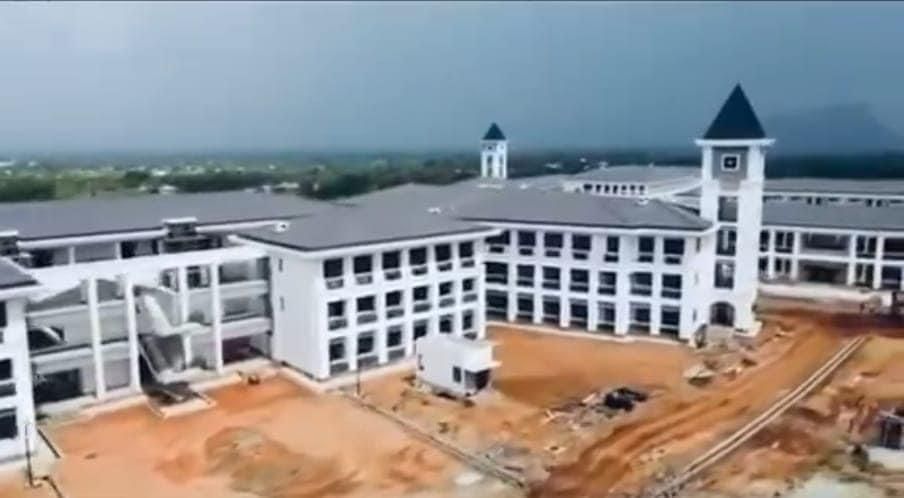The construction of Phase Two of the University of Health and Allied Sciences (UHAS) in Ho is ready for commissioning, signaling a pivotal moment in healthcare education in the country.
The $60 million project is designed to house the Central Administration of the University and the School of Nursing and Midwifery (SONAM), which is meant to be the largest of its kind in Africa.
The project also includes classrooms, a library, laboratories, an auditorium, a student activity center, and a cafeteria. These additions are set to enhance the university’s capability to deliver top-tier education and foster an environment conducive to learning and innovation.
The design and planning phases saw extensive collaboration between the China Urban Construction Design & Research Institute Co., Ltd. (CUCD) and the technical staff of UHAS, ensuring that the project met the highest standards. The project symbolizes not only an expansion in infrastructure but also a commitment to advancing healthcare education and services in the region.

It will be recalled that President Nana Addo Dankwa Akufo-Addo, on Friday, September 10, 2021, ceremoniously cut the sod to commence the second phase of the UHAS Project.
This followed the signing of the exchange of notes between the Minister for Finance, Ken Ofori-Atta, and the Chinese Ambassador to Ghana to secure $60 million for the construction of the second phase of UHAS on January 11, 2019. The signing of the financial agreement marked the beginning of a significant journey for the university, setting the stage for a transformative project that would elevate the university’s stature and impact.
After years of meticulous planning, collaboration, and construction, the second phase of the UHAS project has been completed and is ready for commissioning, standing as a testament to the relentless pursuit of academic excellence by the New Patriotic Party (NPP) administration.

President Akufo-Addo’s administration demonstrated unwavering support by providing GH¢6.2 million in counterpart funding for essential preliminary works, such as extending electricity, municipal water supply, and constructing necessary infrastructure, underscoring the government’s dedication to supporting educational development and infrastructure.
The first phase of the University Project was funded by the Chinese Government through its development agency, China AID, at a cost of 104,850,000 RMB (Chinese Yuan), equivalent to approximately $16 million.
The facilities present at the time included an administration block, classrooms, a library, laboratories, an auditorium, a student activity center, and a cafeteria for the School of Basic and Biomedical Sciences.





















